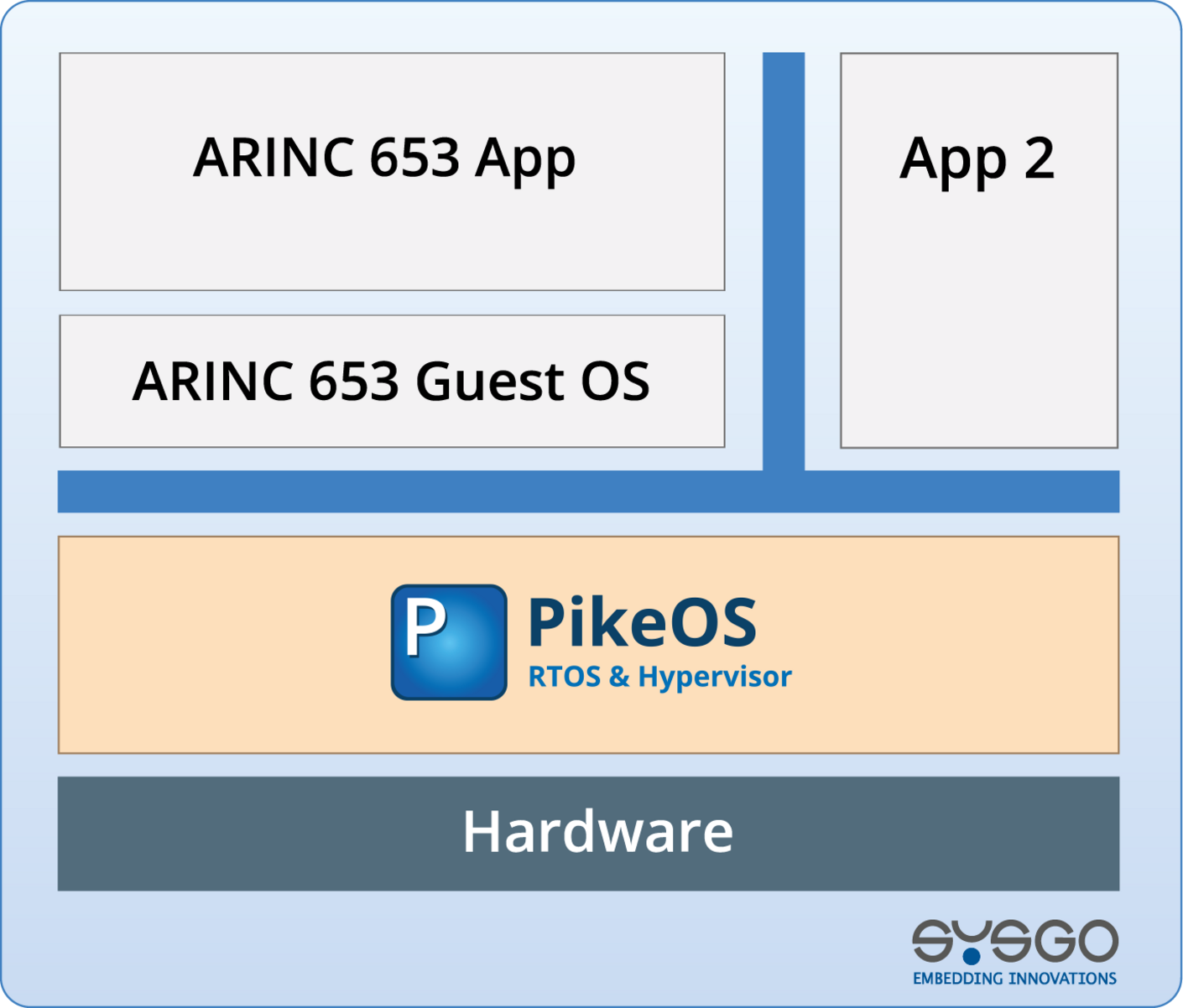ARINC 653 Compliance
PikeOS system configuration is fully compliant to ARINC 653
Flexible ARINC 653 Technology Access
PikeOS's philosophy allows to access ARINC 653 technology from other partition types. Even Linux applications may access communication ports
Safety Certification
Certifiable according to Avionics standard DO-178C DAL A
Seamless Integration with Modular Avionics
Development for Integrated Modular Avionics (IMA) by means of the ARINC 653 API
Time-Partition Flexibility
Extended time-partition mechanisms allow to build more flexible systems




